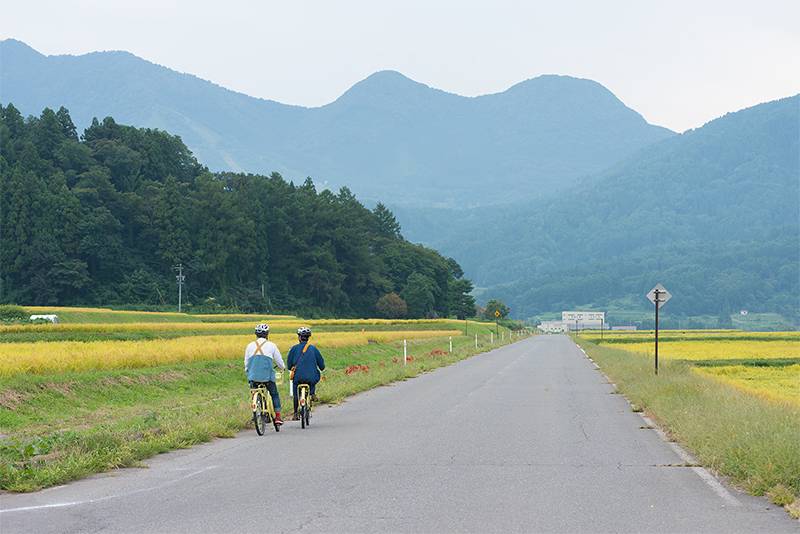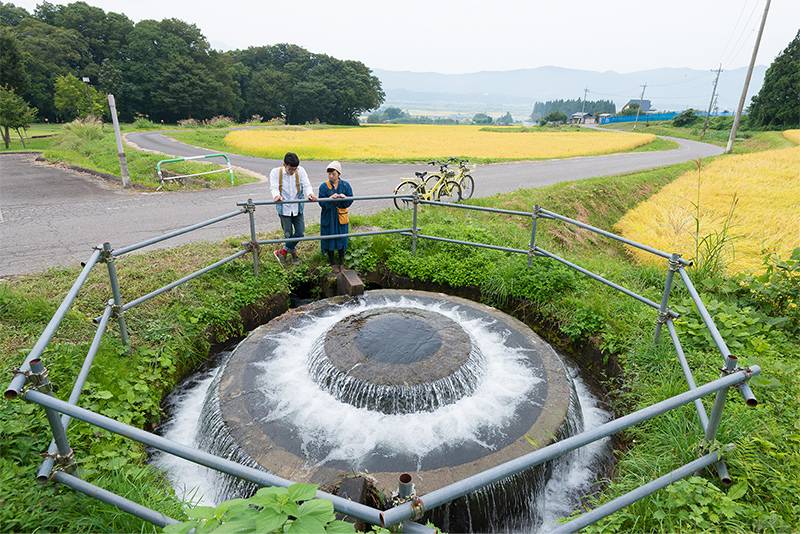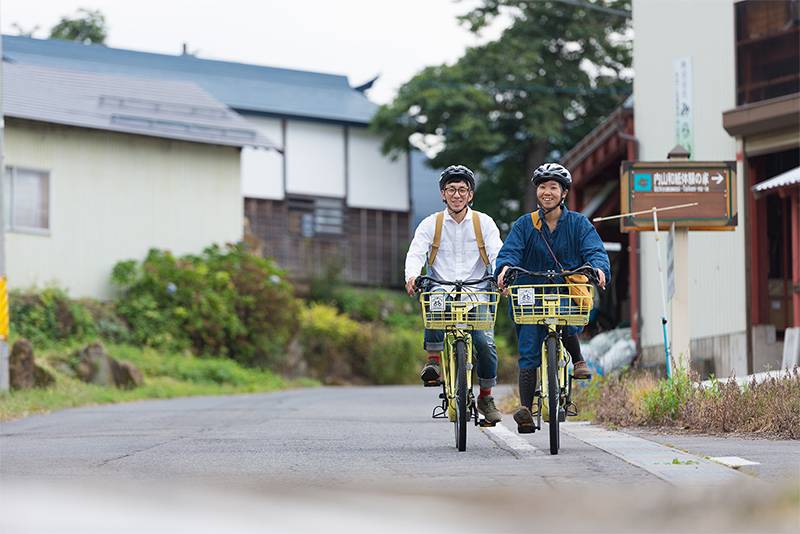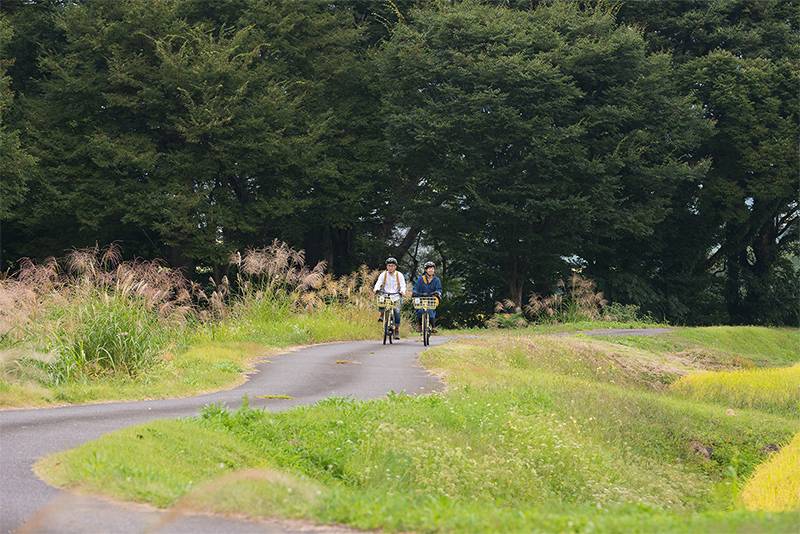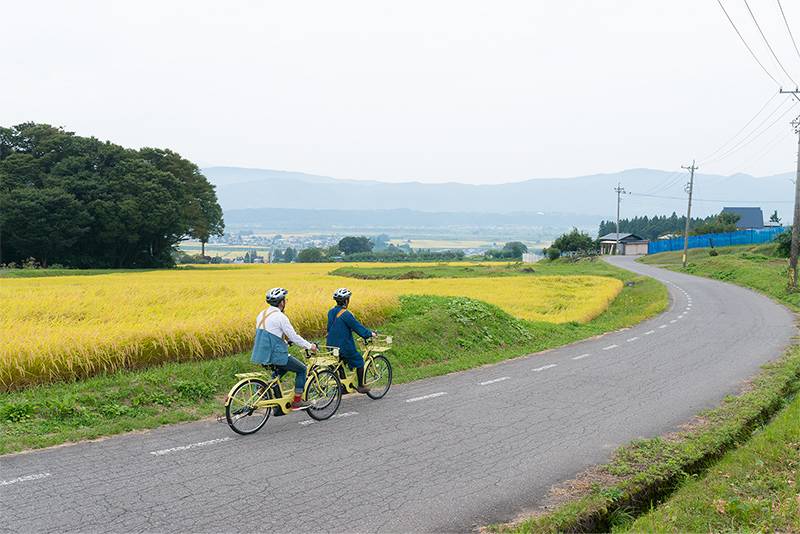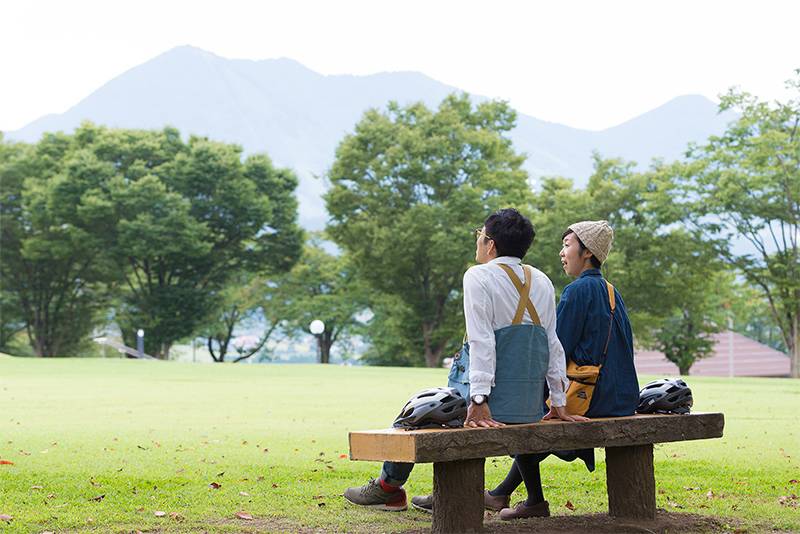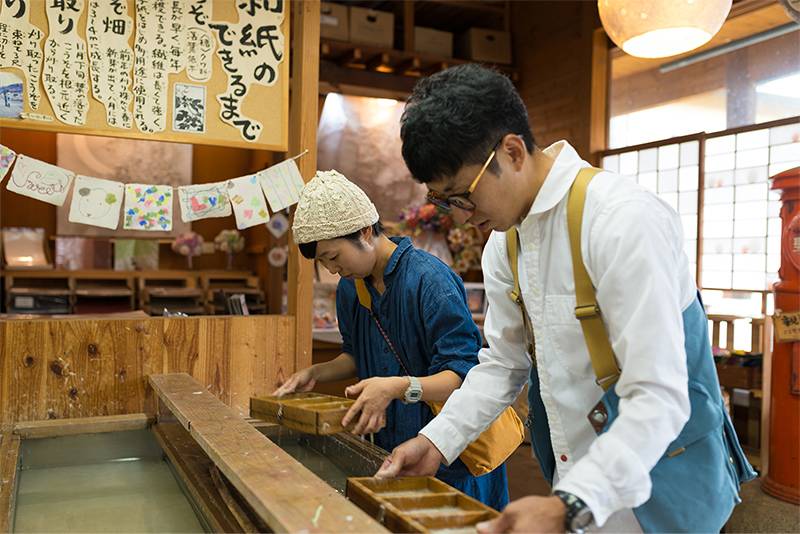Kijimadaira Village Route
Slow and easy, through a peaceful rural landscape
The Kijimadaira Village Route starts and ends at the Roadside station Farmus
Kijimadaira. The first half is mostly uphill, and the second half is mostly downhill, with some ups and
downs along the way, but it’s a 15.6km course overall, and those who aren’t confident in their physical
stamina can still enjoy a leisurely ride, so we recommend this route for couples and groups who want to
spend a half or full day just taking it easy.
You can also start from Iiyama Station, as with the other 5 routes, and if you do, you have the option of
renting an electric power-assisted bicycle. Feel free to take advantage of this if you feel unsure about
riding uphill, or if you just want to enjoy an effortless ride.
| DISTANCE | 15.6km |
|---|---|
| RECOMMEND TO | Families, groups, couples |
| TIME REQUIRED | 3hours |
| START | Roadside station Farmus Kijimadaira |
| GOAL | Roadside station Farmus Kijimadaira |
After we take off from the Roadside station Farmus Kijimadaira, the path takes
us up a gentle slope for a bit. First, we’ll be taking our time and enjoying the scenery as we approach the rice
paddy viewing spot, the high point halfway through the route. Along the way, we’ll want to stop by the Nakamachi Museum, which uses an old warehouse from a sake brewery, and take a peek at
the individual and project exhibits there.
The uphill leg keeps on going past the Museum, but it’ll be a breeze if you have a power-assisted bike, and I
actually recommend getting off to walk your bike for this part of the ride anyway, which is because Kijimadaira
Village is a farming village blessed with clean air and water. Melted snow comes down from Kayanotaira Kogen,
home to a vast primeval forest of beech trees over 300 years old, and flows in as spring water to enrich the
village. If you walk through this area, sharpening the five senses to take it all in, you’ll get that much
better an experience of this village’s unique allure that lies in the very ground it stands on.
After we climb on past the Kijimadaira Tourist Information Center, the peak of the journey will come into view.
This is a view point that gives you a full view of some beautifully terraced rice fields and the Iiyama Basin.
Take a camera with you to cut out your own piece of the scenery with, or just enjoy the view; either way, you’ll
want to soak in the beauty that can only be seen here.
From here on out, the route goes downhill. Before long, we’ll reach a Keyaki no Mori
Park. Nearby is the Uwaseki Cylinder Watershed, which tells us of the
plentiness of water and how deeply connected it is with people’s lives. Ah, so this is how the water gets spread
so evenly. That’s right! And you can’t talk about Kijimadaira’s water without mentioning the handmade paper of
the Uchiyama region, called “Uchiyama-gami.” It’s a short ways off of the route, but you can try your hand at
making handmade paper at the Uchiyama Handmade Washi Paper Studio, so don’t miss out on this opportunity to
literally get your hands on some of the village’s history and culture.
From here, we’ll pedal straight down the road through more rural area, with the village’s symbol, Mt. Kosha,
standing tall in front of us. As we ride on with an invigorated feeling in our chest, the highlight of the
second half, the Netsuka Ruins, will appear. These ruins boast a great view, and
a nostalgic one reminiscent of old times when coupled with the serene scenery around it. This is actually
well-known as a place where fireflies can be seen dancing around in the early summer.
It’ll take no time to get back from the ruins to the Roadside station Farmus
Kijimadaira. And we will have enjoyed Kijimadaira Village’s great outdoors, its beautiful and
peaceful scenery, and the leisurely pace at which time goes by there, to the fullest.
Shops and points of interest along route
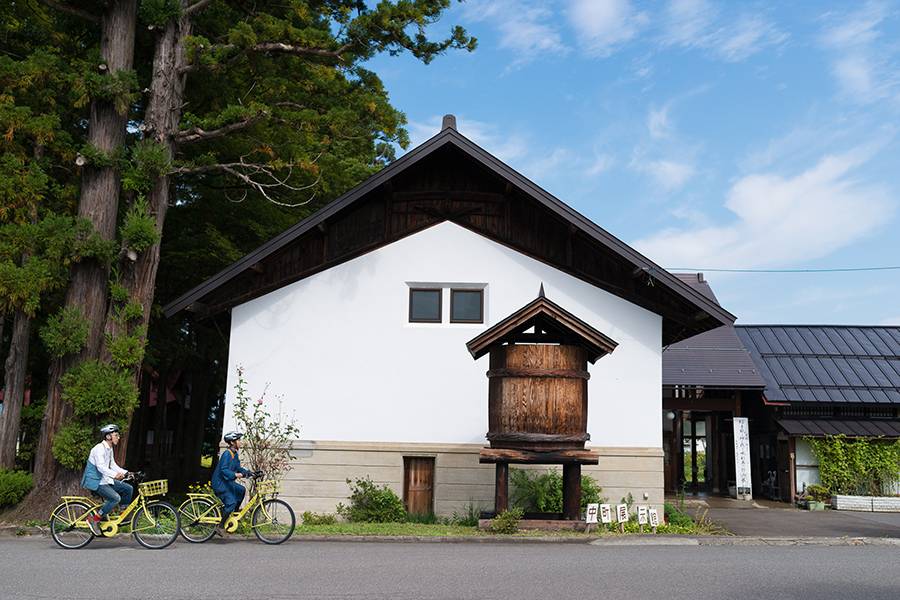
Nakamachi Museum
- Phone
- 0269-82-3105
- Fees
- Free
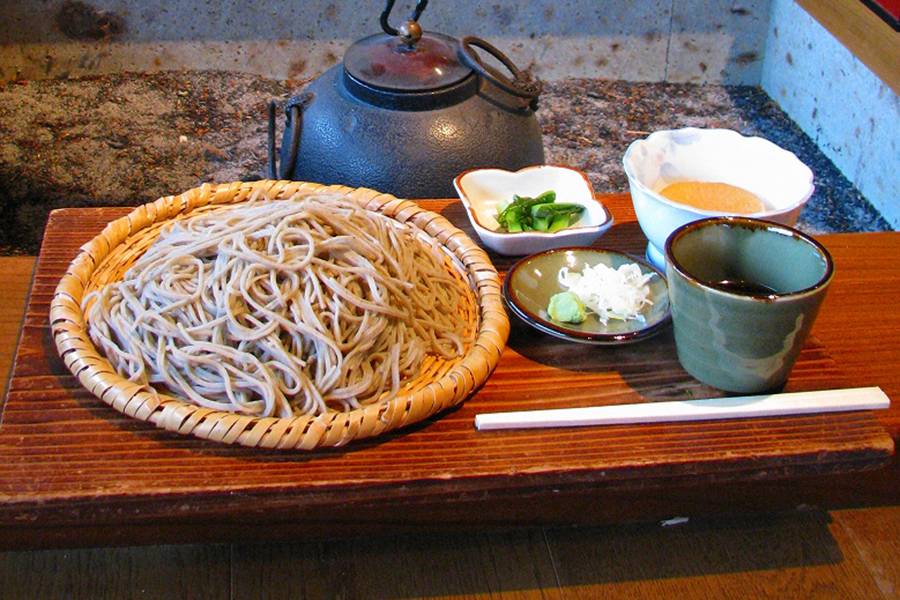
Tarudaki handmade soba noodles
- Phone
- 0269-82-3955
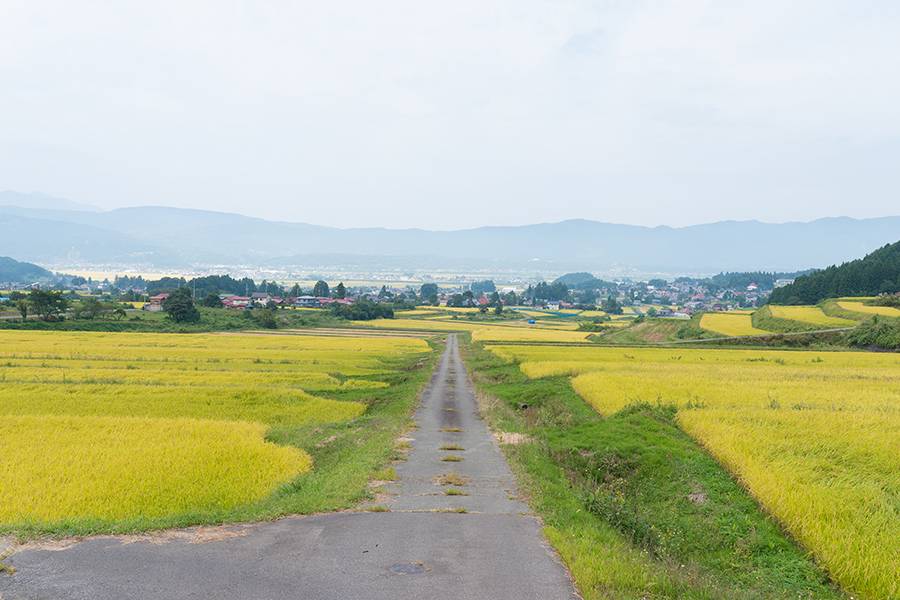
Heyazawa Rice Terraces
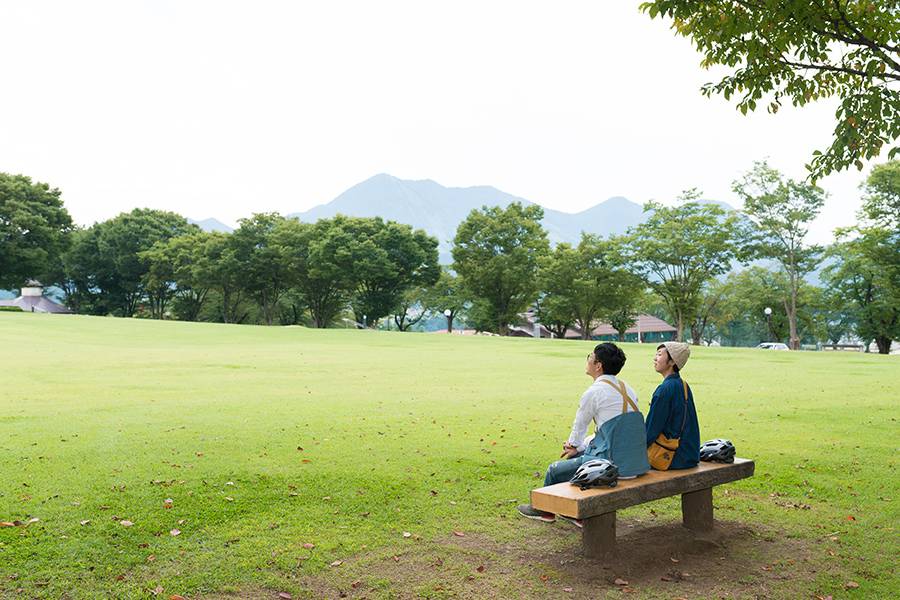
Keyaki no Mori Park
- Phone
- 0269-82-4388
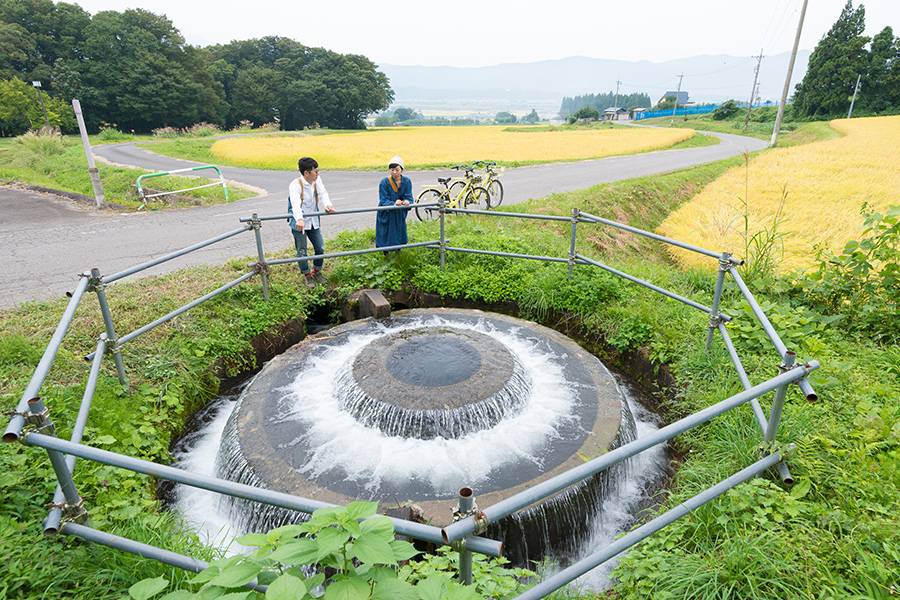
Uwaseki Cylinder Watershed
The circular pool adjacent to the parking space at Keyaki no Mori Park draws water from the Magusegawa River and was built in 1961.
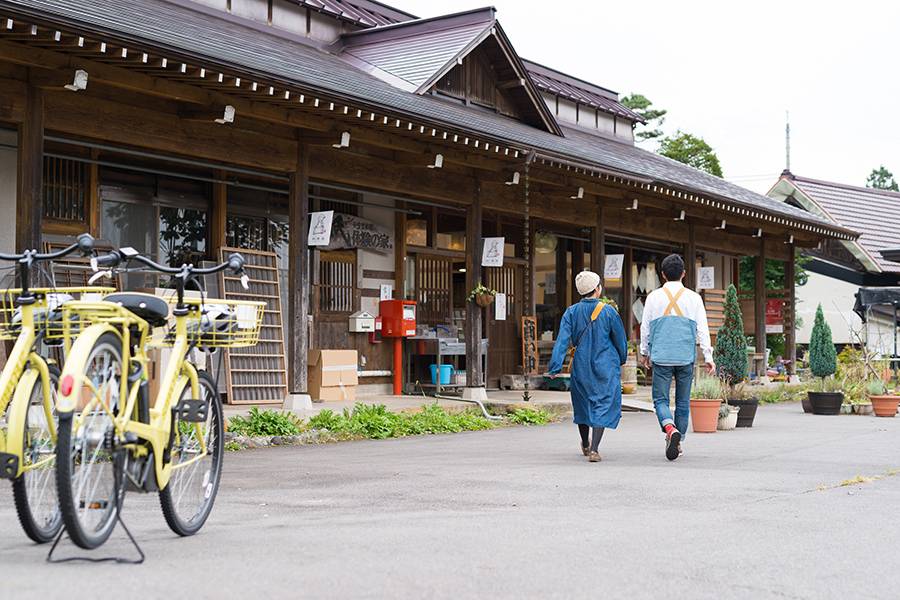
Uchiyama Handmade Washi Paper Studio
- Phone
- 0269-82-4151
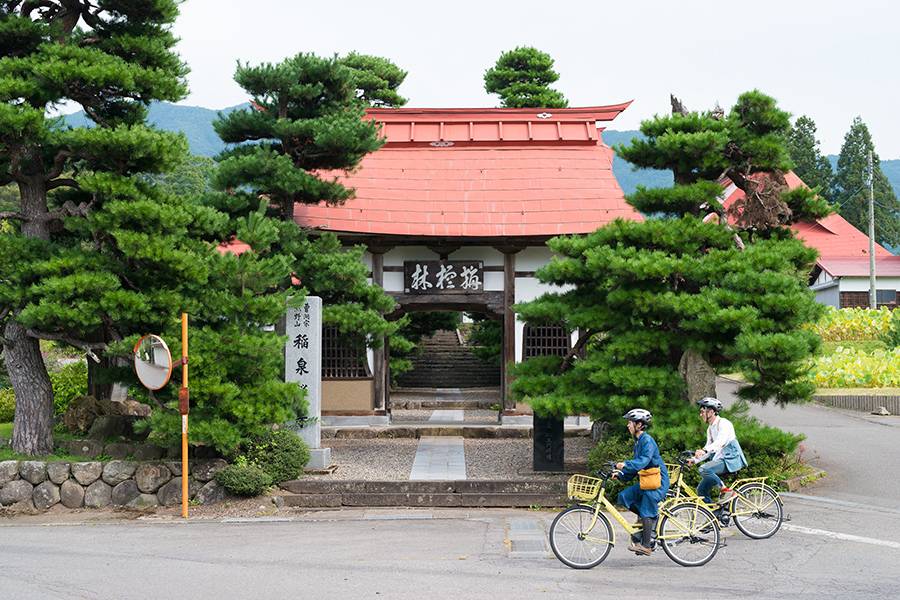
Tosen-ji Temple
- Phone
- 0269-82-3307
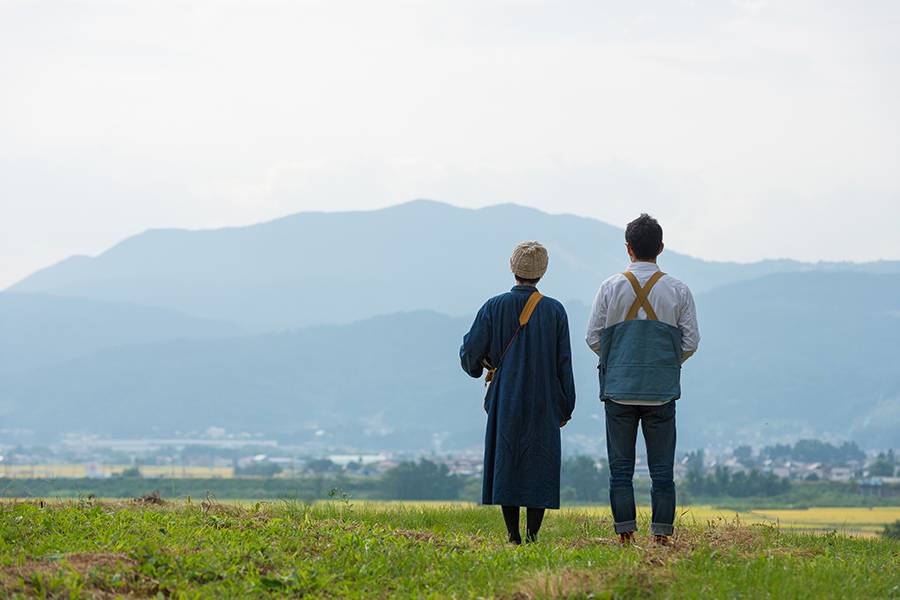
Netsuka ruins
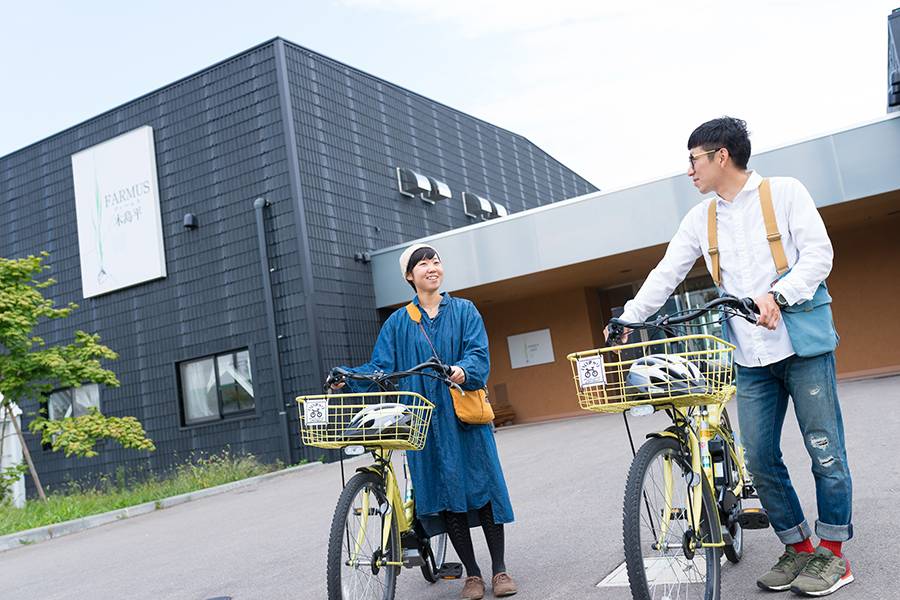
Roadside station Farmus Kijimadaira
- Phone
- 0269-62-2201
Recommended bicycles
| GEAR | SIZE | PRICE | SPEC | |
|---|---|---|---|---|
 |
Cross bike | S.M.L (height 150cm-185cm) |
Half a day: 2,000yen 1day: 3,000yen |
Cross bike is lightweight, designed to be ridden on off-road, unpaved and paved roads at relatively high speed. It's great for long rides.We have the mont-bell's & bianch's. |
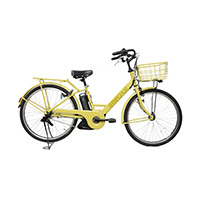 |
Elecric bicycle | 26in | Half a day: 2,000yen 1day: 2,500yen |
Elecric bicycle has an integrated elecric motor can be used for propulsion. It has the ability to ride up-hills easily. It's popular among women and first time riders. |

